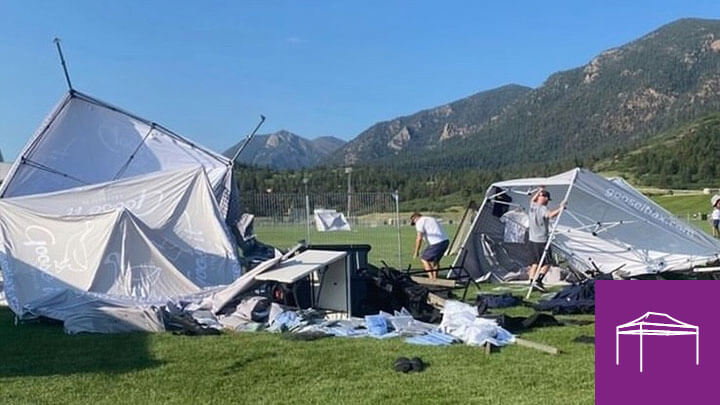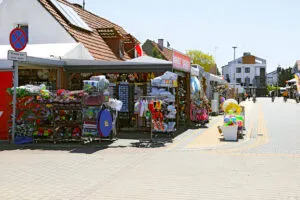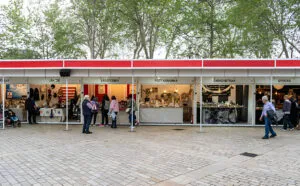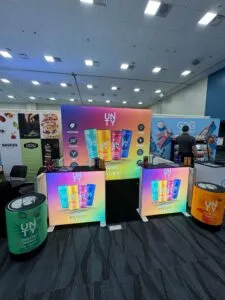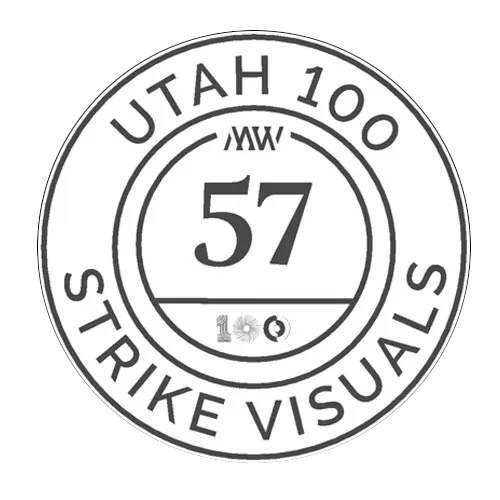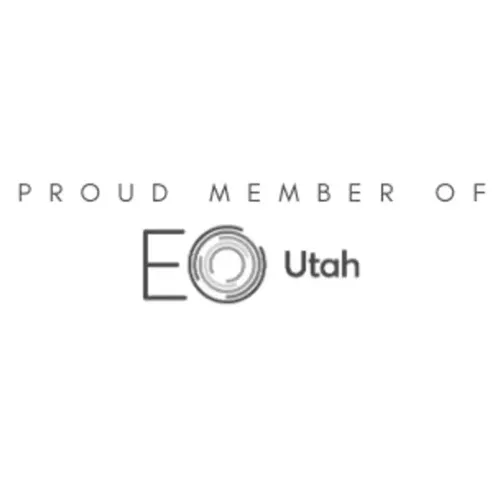Recently updated on June 18th, 2025
Are you getting frustrated with pop up tent problems ruining your trade show’s success? Don’t let these challenges hold you back any longer!
In this post, we will unveil the most common pop up tent problems faced by exhibitors and equip you with valuable solutions to conquer each obstacle. We’ll help you transform your exhibiting experience and set yourself up for success. Let’s dive in.
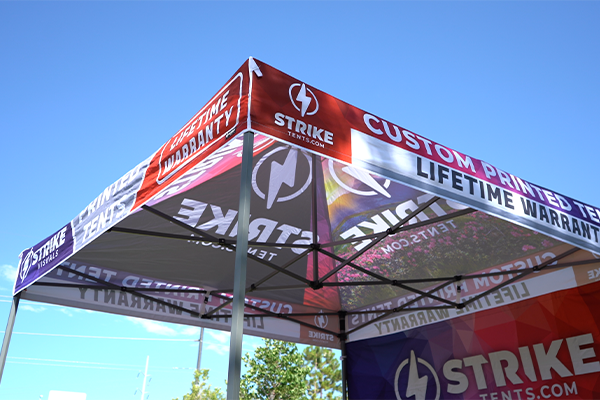
Pop up Tent Canopy
A pop-up tent canopy is a super easy way to create shade and shelter outdoors. Just unfold the frame, and it pops into place—no tools needed! The top cover keeps you safe from sun, light rain, and wind, so it’s perfect for picnics, parties, games, or even your local market stall. It’s lightweight, simple to set up, and helps make any outdoor space feel more comfortable.
Many come with optional sidewalls for extra coverage, which is great if the weather changes. You can find them in all sorts of colors and sizes, so there’s something for every style and event. Best of all, they fold up small, making them easy to carry and store. Whether you’re hosting a backyard get-together or selling goods at a fair, a pop-up canopy is a fun and handy way to stay cool and covered.
1. Pop Up Tent Susceptible to Wind-Related Issues
“Uh-oh, the wind is getting stronger. I hope our tent can handle it!”
One of the common pop up tent problems is with the canopy tent is its vulnerability to wind-related issues. Strong winds can cause the tent to be unstable or to collapse. This poses a safety risk for the people around it, potentially damaging the tent and its nearby objects.
Factors Affecting Pop up Tent Stability
When it comes to your tent canopy stability, several key factors come into play when you set up your outdoor pop-up tents. Wind speed can make or break your trade show exhibit. Those gusty winds can create chaos in your setup if you’re unprepared.
The wind isn’t the only thing you need to look out for regarding your pop-up canopy tent. Your tent design and the surface you set it up on also matter. If the surface is uneven or soft, it could mess with your tent’s stability. Also, don’t forget to anchor your tent with sturdy weights. Skipping this step might end you up with some serious problems during the trade show.
Solution: Opt for a wind-resistant canopy with a sturdy frame design and secure proper anchoring
Sturdy Frame Design
Invest in pop up canopy tents with a strong and durable frame design. Look for tent frames made of high-quality materials such as regular aluminum or steel frame. These materials provide better stability and can withstand windy conditions.
Wind-Resistant Canopy
Opt for canopies made of durable, wind-resistant materials such as heavy-duty polyester or nylon. These materials are less likely to tear or get damaged in windy conditions.
Secure Anchoring
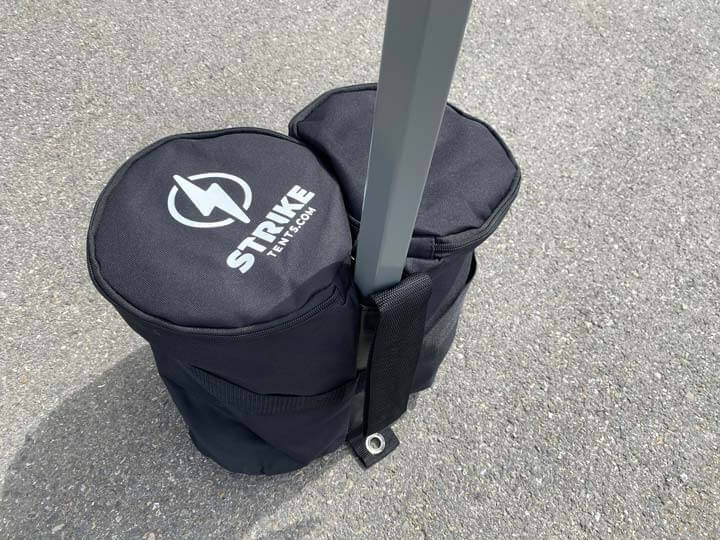
Use sturdy tent stakes, water weights, guy lines, or sandbags to secure the tent firmly to the ground. Properly anchoring the pop up canopy tent will prevent your tent from being blown away by the wind. Consider using additional anchoring options for added stability.
2. Pop up Tent Frame Easily Breaks and Deforms
“Careful with the tent frame. It seems a bit delicate. We don’t want it to break.”
Buying fragile frames can compromise the stability and durability of your pop up tent. It can even cause trouble for your entire booth setup. Not only does this jeopardize the safety of your booth. It also builds up a negative impression of your business. Saving some money now doesn’t mean it’s for your better advantage. A weak tent frame collapses and may easily bend or break, making the tent unusable, and could cost you more since it may need frequent repairs.
Solution: Choose a pop up tent with robust and durable frames.
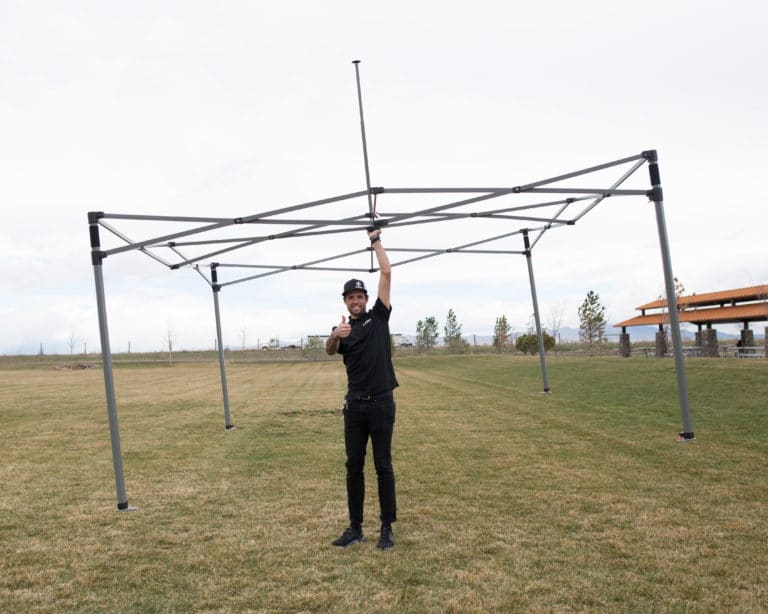
Choose frames made from durable materials like regular aluminum or steel. It would also help by regularly inspecting the tent frame for damage or wear and tear and promptly replacing any damaged parts. Educate your team on handling the tent frame to prevent unnecessary stress or mishandling.
3. Sagging Canopy Resulting from Water Accumulation
“Ugh, the rainwater is causing the canopy to sag. We need to fix this.”
Canopy tents, without a water-resistant material, can transform into a soggy mess when it rains. When rainwater gets collected on the canopy, it begins to sag, putting more weight and strain on the fabric. Over time, this can lead to leaks, damaging your tents, canopy frame, booth display, and other valuable merchandise inside. Not to mention, a droopy canopy looks unprofessional and fails to attract potential customers to your booth.
Solution: Choose a sloped canopy design made with water-resistant materials.
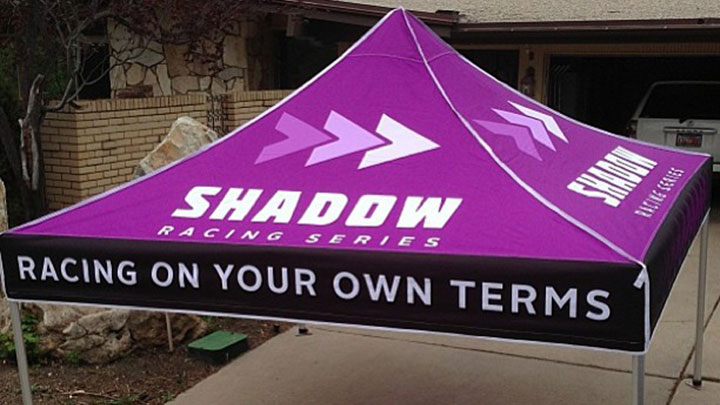
Consider a sloped canopy design that allows rainwater to run off. To add, choose a tent made from water-resistant material. It will prevent the water from heavy rain from seeping through the seams of the fabric, keeping your booth dry and comfortable during rainy conditions.
It’s also essential to inspect and maintain your canopy tent regularly. Clear any accumulated water promptly and ensure the canopy is secured to prevent sagging.
4. Storage and Transport Hassles: Bulky and Heavy Pop Up Tents
“This whole tent here is so heavy and bulky. How are we going to carry it back to the car?”
During trade shows and events, exhibitors struggle to store and transport bulky and heavy pop up tents. This scenario makes it difficult for them to take down and find suitable storage space when not in use. Moreover, moving them from one trade show venue to another becomes burdensome.
Solution: Invest in a lightweight, compact, and portable Pop up Tent
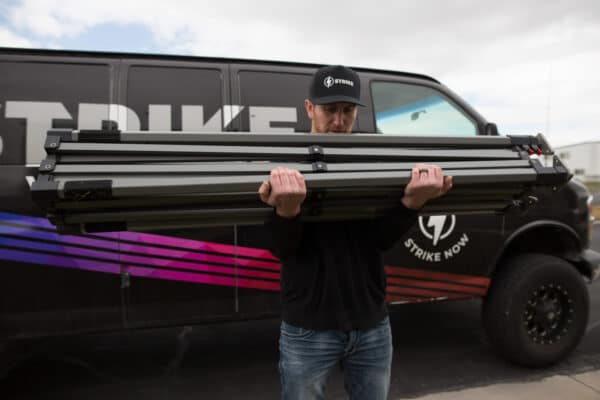
To avoid these, consider investing in a portable and compact pop up tent. Look for tents with a collapsible frame or foldable design that allows ease in storage. Choose lightweight materials without compromising durability, making your investment worth every dollar.
To add, use storage bags or cases designed for pop-up tents to keep them organized and protected when not in use. Doing this makes it more convenient to transport the tent without straining yourself.
5. Limited Visibility and Branding Opportunities
“I wish my tent had more eye-catching signage. It’s hard for attendees to notice our tent.”
With the trade show’s competitive landscape, every exhibitor dreams of being at the attendee’s top of mind and making a memorable impression on the visitors. When your tent only blends into the sea of other displays, it becomes challenging for attendees to notice and remember your business. Without clear and eye-catching visuals, your brand message can get lost in the pool of trade show displays. Thus, resulting in missed connections and lower engagement.
Solution: Use Clear and Eye-Catching Branding Elements
Optimize your tent’s visibility by using strategic branding elements. Choose a tent with enough space for large, eye-catching graphics and signage. Use high-resolution printing techniques to ensure crisp, vibrant graphics that cover your brand colors. Adding accessories such as banner stands, flags, or custom table covers can help amplify your brand presence. Proper lighting inside and outside the tent can also significantly improve visibility.
6. Dull and Faded Colors Due to Inclement Weather Conditions
“Our tent looked so vibrant when we first got it. Now, the colors are starting to fade.”
You invested in a vibrant, eye-catching pop-up tent that represents your brand. But with repetitive use, your tent began to lose its color due to prolonged exposure to the sun, rain, wind, and dust.
Fading colors don’t only give your tent a worn-out and tired appearance. They also diminish its capacity to capture attention and effectively convey your brand message. Their impact goes beyond aesthetics-it also affects people’s perception of your brand. It can even cause them to doubt the quality and reliability of your products and services.
Solution: Choose a pop-up tent made with UV-resistant materials
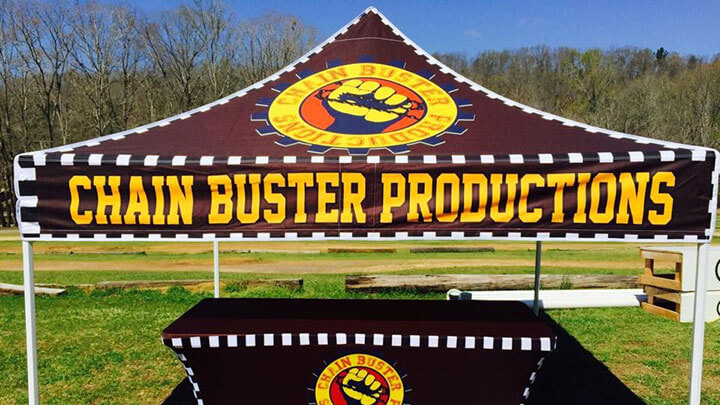
Opt for a canopy tent made with UV-resistant materials to withstand prolonged exposure to sunlight and harsh weather. Look for canopies with protective coatings or treatments to resist color fading. Also, maintain proper storage practices to extend your tent’s shelf life.
7. Lengthy Turnaround Time
“I can’t believe the custom canopy for my pop-up tent is taking so long. It’s delaying my preparations for the upcoming trade show.”
When you have to wait endlessly for your custom pop-up tent to arrive, the more it gets frustrating. The lengthy turnaround time for your pop-up tent also poses significant challenges to your promotional activities and event participation. It hinders your ability to execute and effectively plan for your marketing strategies. The delay disrupts your trade show preparations and affects your overall promotional timeline. You may miss critical opportunities to engage with potential customers, build brand awareness, and generate valuable leads.
Solution: Proactively Communicate Your Intended Timeline with the Tent Manufacturer
Set proper expectations and clearly and proactively communicate with your supplier or tent manufacturer from the beginning. Take time to express your concerns with them, and ask for a specific timeline. If possible, inquire if they have ways to expedite the process. If the wait becomes too lengthy and compromises your trade show plans, consider exploring alternative options.

Preventative Maintenance Tips for Your Pop Up Tent Problems
To maintain your pop-up tent and avoid common problems, regular cleaning is essential. After each use, ensure you remove dirt and debris from the fabric and zippers, using mild soap and water for stains while avoiding harsh chemicals. Proper storage is also crucial; always dry your tent completely before storing it in a cool, dry place to prevent mold and mildew. Avoid leaving the tent in direct sunlight for prolonged periods, as this can damage the material.
Careful handling and routine inspections are key to prolonging the life of your tent. Gently handle poles and zippers to avoid damage and fold the tent neatly rather than forcing it into its bag. Use a groundsheet to protect the tent floor from sharp objects.
Regularly check for tears, holes, and weak spots, and inspect poles and zippers for signs of wear, repairing small issues immediately to prevent them from worsening. Reapply waterproofing spray to seams and fabric as needed and ensure the rainfly is in good condition.
Lastly, avoid overloading the tent by not exceeding its capacity and being mindful of the weight and tension on the tent fabric and poles.
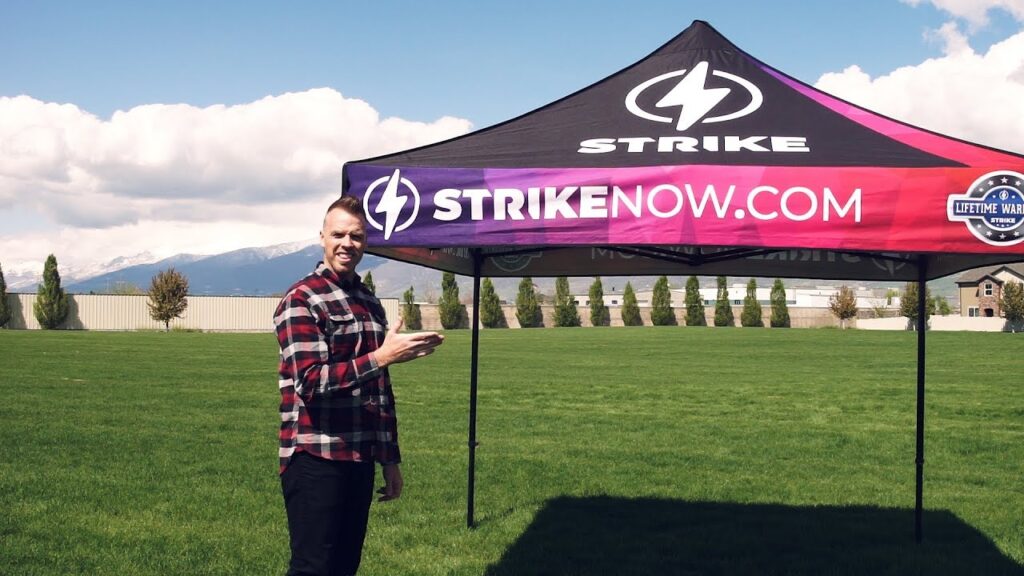
When to Seek Professional Help
In some situations, DIY repairs might not be enough to fix your pop up tent problems. If the fabric has large tears or extensive damage, professional help is often necessary. Large rips can compromise the tent’s integrity and may require specialized tools and materials to repair properly. Similarly, if the tent poles are severely bent or broken, professional repair services can provide the right replacement parts and ensure they are installed correctly.
Zipper malfunctions can also be tricky to fix on your own. If the zipper is completely broken or missing teeth, it is best to consult a professional. They have the expertise to replace zippers without damaging the tent fabric.
To find professional repair services, start by checking on our website. Many companies offer repair services or can recommend authorized repair centers. Local outdoor gear stores often provide repair services or can refer you to reliable professionals. Online reviews and recommendations from fellow campers can also help you find reputable repair services.
Conclusion
When you know the common challenges associated with pop-up tents and address all of them, you can ensure a successful and stress-free trade show experience. Choose sturdy frames and wind-resistant tents, and maintain them regularly. Opt for UV and water-resistant materials to prevent sagging tents and maintain vibrant colors. Look for compact and lightweight designs for easy storage and transport. Lastly, plan and verify estimated timelines for your tent delivery to avoid delays. With these solutions to pop up tent problems, you can have a reliable and cost-effective investment on your next trade show.
FAQs
How can I make my pop-up tent stronger?
Use sturdy tent stakes when you set up your pop-up tent. Should those not be enough, you can add some weight to the base of the frame for extra support. You can use water or exercise weights, sandbags, or any other heavy bag that can do the trick to secure your tents, especially during windy conditions.
How much wind can a pop-up canopy take?
When set up and anchored correctly, most pop-up tents can handle heavy winds up to 30 MPH.
It’s also best to check the weather forecast before using your pop-up tent canopy to ensure the winds will be below the 30 MPH mark. Should the winds be predicted to go beyond it, it’s advisable to reschedule to set it up for another day.
How do you take care of a pop up tent problems?
Frequently cleaning your tent helps prevent dust and dirt accumulation from the fabric. Use mild soap and water to clean the tent, and avoid using bleach or hard detergents to maintain the texture and color of the tent fabric. Use soft materials to remove stains or debris from the tent, such as a sponge or a soft brush. Rinse it with water and dry the pop-up tent before storing it.
How do I fix a pop-up tent frame?
Start by opening the tent and checking for damage like bent poles, loose joints, or parts that won’t click into place these are usually the first to wear out after frequent use or rough weather. If you spot a bent leg or cracked connector, you can often replace it with a spare part from the brand. For quick fixes, zip ties or tape can help, but always check that the frame is stable before using the tent again.
